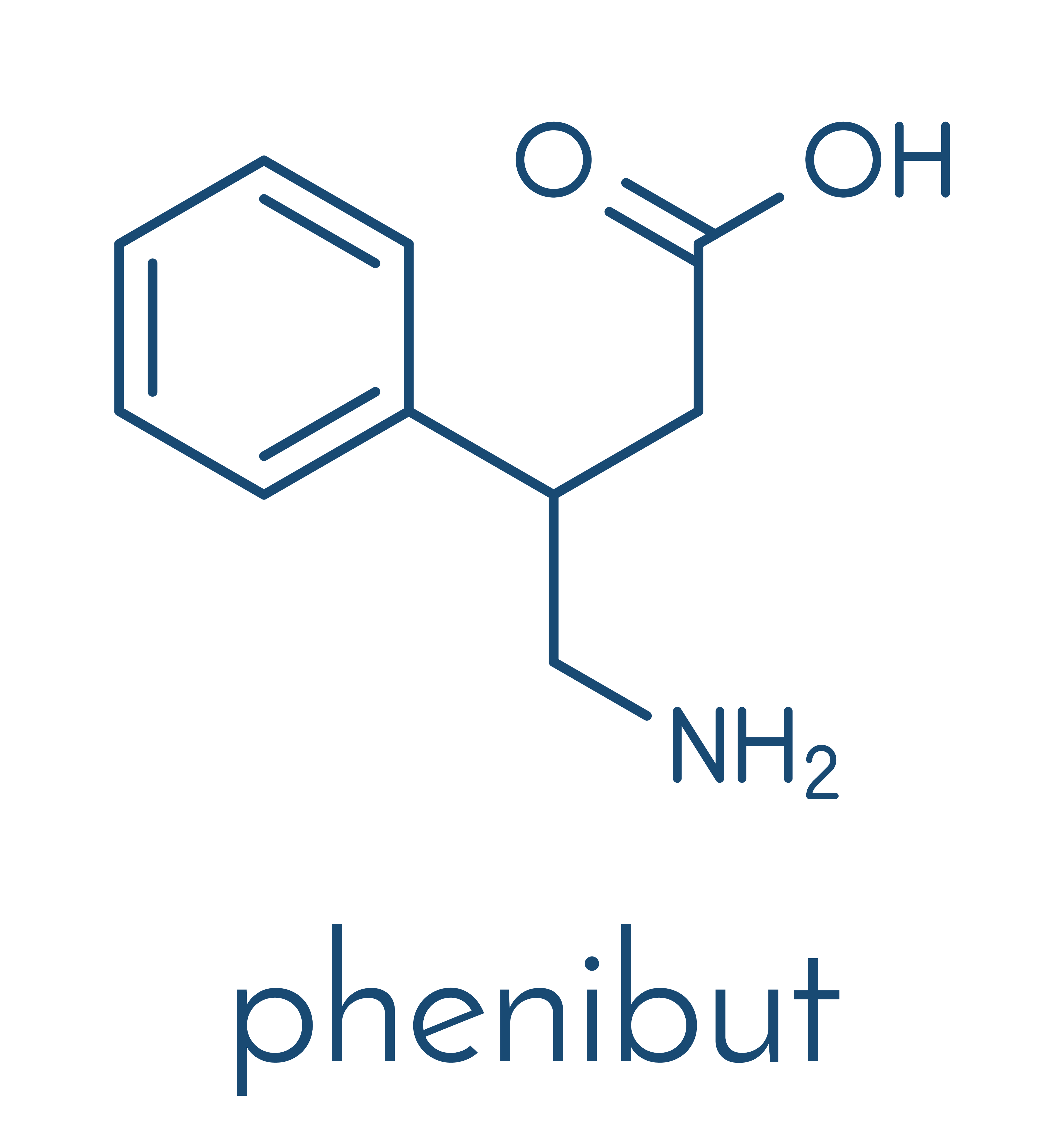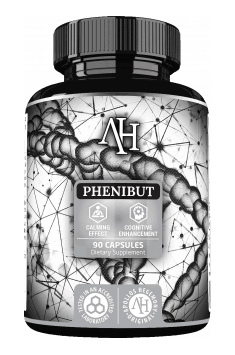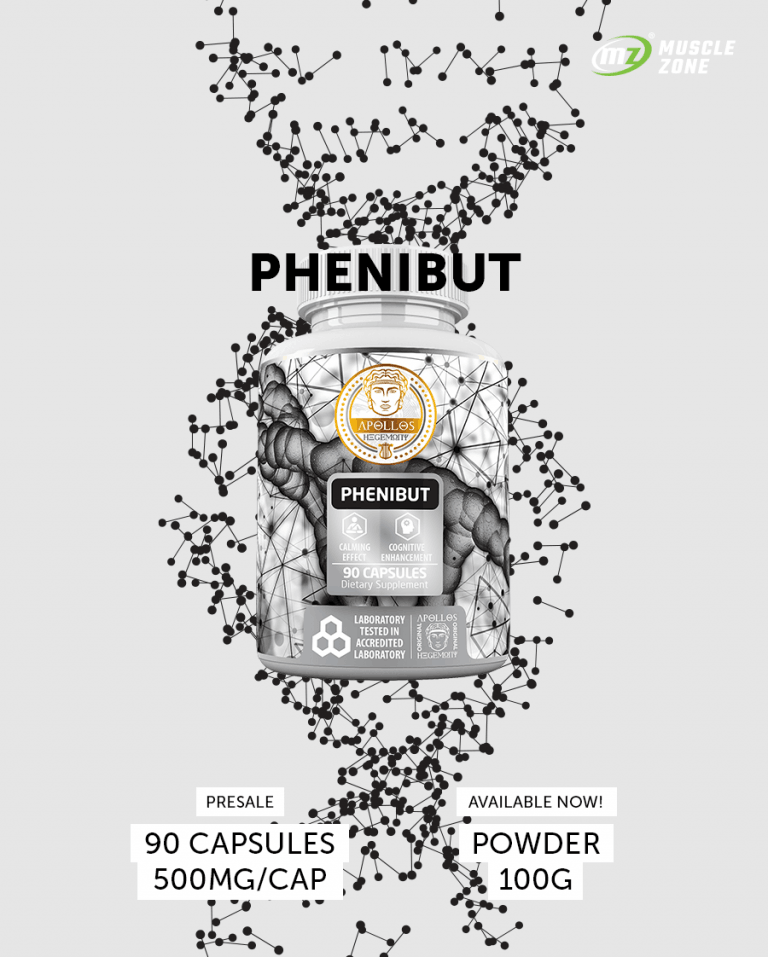Phenibut (beta-phenyl-GABA, also known as fenibut) is an antidepressant used in the treatment of many ailments, including post-traumatic stress disorders, depression and alcoholism.In the following article we will try to introduce you to the nature of this substance, the health benefits of its use and the potential side effects. We invite you to read our article!
The word of introduction: What exactly is phenibut?
Phenibut is a synthetic drug that is structurally similar to a substance naturally found in the brain called gamma-aminobutyric acid (GABA), which has a calming effect on our neuronal system (1). Phenibut, also known as fenibut, is sold under the trade names Noofen and Citrocard (2). Phenibut was developed in Russia in the 1960s and has since been used as a prescription drug to relieve tension, anxiety, post-traumatic stress disorder, depression and other states of mental imbalance (3).
It is not approved by the FDA for clinical use in the United States. However, it is sold as a nutritional supplement (4)

Health benefits of Phenibut
1) Phenibut has neuroprotective effects
In rats, fenibut reduced amnesia and improved reduced blood flow, as well as sensation and motion deficiency caused by stroke (5, 6). In addition, the severity of amnesia and behavioral deficit in rats exposed to electric shock decreased (7). Phenibut also reduced neuralgia (8). Studies have also shown that phenabyl has protected rat neuronal cells from damage to hydrogen peroxide in a dose-dependent manner (9).
2) Phenibut can have a positive effect on cognitive functions
Phenibut can have a nootropic effect (increasing cognitive ability), which can improve motivation, attention and concentration. Phenibut accelerates the development of defense reflexes at an early stage of conditioning and facilitates the development of conditioned inhibition (10). Phenibut improved learning in rabbits by boosting the brain's response to stimuli (11). This improved the passive avoidance of conditioning and helped to prevent amnesia caused by scopolamine (sedative) or electric shock (12, 13).
3) Phenibut can significantly reduce anxiety and aggression

In animals, phenibut reduced fear and anxiety and facilitated escape from stressful situations and stimuli (14, 15). In rats, phenibut reduced aggression during provocation (16).
4) Phenibut can protect the heart
In animal models, phenibut and nitric oxide positively affected heart health, reducing heart rate and contractility in stressful situations (17, 18). In combination with nicotinic acid, it reduced the disturbances of blood flow after stroke in animals (19). Phenibut can prevent heart damage in case of alcohol poisoning (20). In addition, studies have shown that phenibut can regulate the heart rhythm (21). In pregnant rats with preeclampsia, phenytan prevented the increase in blood pressure, decreased protein in the urine, increased blood flow in the uterus and normalized blood flow and platelet formation (22, 23).
5) Phenibut can help prevent alcoholism
In animals, fenibut citrate prevented damage caused by alcohol (24). It also reduced the motivation to drink alcohol (25).
6) Phenibut helps protect and strengthen the immune system
Phenibut regulates the immune system when it is overactive and restores the number of phagocytic cells (cells that pick up dangerous microbes) (26). In rats and mice phenibut restored the immune system after suppression with cyclophosphamide (27).
7) Phenibut can help to treat respiratory problems
In rats, phenibut prevented the apnea (stopping breathing) induced by serotonin (28). Injection of phenibut increased the time of inhalation during exposure to negative emotional stimuli (29).
Potential side effects
Two people with elevated levels of phytheroxy experienced symptoms of delirium and reduced consciousness, indicating that excessive levels of this substance may be toxic (30). Side effects of phenibut include headaches and depression. An overdose of phenibut can cause lowering of body temperature, muscle relaxation and drowsiness (31). The withdrawal symptoms include severe anxiety, irritability, dizziness, fatigue, loss of appetite, insomnia, muscle spasms, heart palpitations, hallucinations and confusion (32, 33). Phenibut should not be taken as a supplement, but rather as a medicine.
Summary
- Addition of the phenyl group to GABA allows passage across the blood-brain barrier,
- Phenibut increases the release of dopamine and blocks β-phenylethylamine (PEA),
- It also mimics nootropic GABA by binding to GABA-b and to some extent to GABA receptors.
References:
- http://www.sciencedirect.com/science/article/pii/S001429990800068X
- http://rupharma.com/noofen/
- http://onlinelibrary.wiley.com/doi/10.1111/j.1527-3458.2001.tb00211.x/pdf
- https://www.erowid.org/references/refs_view.php?ID=8526
- https://www.ncbi.nlm.nih.gov/pubmed/16878492
- https://www.ncbi.nlm.nih.gov/pubmed/26621244
- https://www.ncbi.nlm.nih.gov/pubmed/26906198
- https://www.ncbi.nlm.nih.gov/pubmed/26234470
- http://www.fasebj.org/content/26/1_Supplement/672.6.short
- https://www.ncbi.nlm.nih.gov/pubmed/19476215
- https://www.ncbi.nlm.nih.gov/pubmed/15776965
- https://www.ncbi.nlm.nih.gov/pubmed/26906198
- https://www.ncbi.nlm.nih.gov/pubmed/20396730
- https://www.ncbi.nlm.nih.gov/pubmed/17944107
- https://www.ncbi.nlm.nih.gov/pubmed/19899708
- https://www.ncbi.nlm.nih.gov/pubmed/26033589
- https://www.ncbi.nlm.nih.gov/pubmed/22702103
- https://www.ncbi.nlm.nih.gov/pubmed/16995433
- https://www.ncbi.nlm.nih.gov/pubmed/12025796
- https://www.ncbi.nlm.nih.gov/pubmed/25432276
- https://www.ncbi.nlm.nih.gov/pubmed/25668940
- https://www.ncbi.nlm.nih.gov/pubmed/18225758
- https://www.ncbi.nlm.nih.gov/pubmed/16047680
- https://www.ncbi.nlm.nih.gov/pubmed/20597368
- https://www.ncbi.nlm.nih.gov/pubmed/20432718
- https://www.ncbi.nlm.nih.gov/pubmed/16579056
- https://www.ncbi.nlm.nih.gov/pubmed/18607733
- https://www.ncbi.nlm.nih.gov/pubmed/26114346
- http://www.amjmed.com/article/S0002-9343(14)00284-8/abstract
- http://www.tandfonline.com/doi/abs/10.3109/14659891.2012.668261?journalCode=ijsu20
- https://www.ncbi.nlm.nih.gov/pmc/articles/PMC3604470/
- http://onlinelibrary.wiley.com/doi/10.1111/j.1527-3458.2001.tb00211.x/pdf
- https://www.erowid.org/references/refs_view.php?ID=8526







One Comment